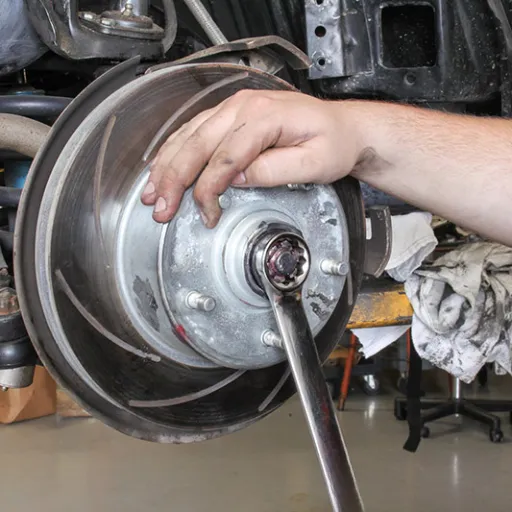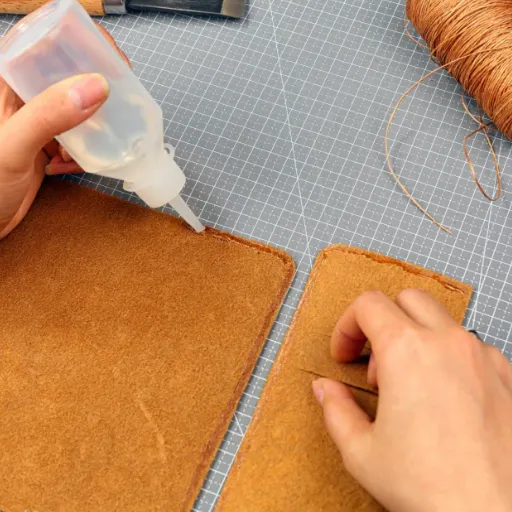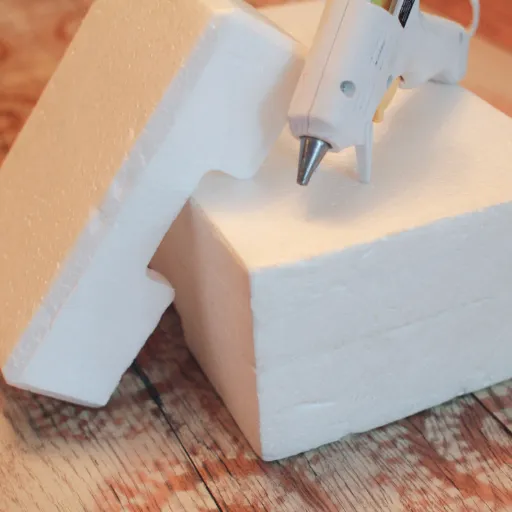In almost every project, you will come across one of two types of adhesive: Super Glue and Loctite. Each of them is trusted for their unique strength and functionality. Each of them has its own use where it outperforms others. If you are working with any form of construction, fixing something, preparing for a DIY task, or even dealing with something at an industrial level, it is important to know the differences of the two. This is the reason why we prepared this article: to help our readers get to know Super Glue and Loctite better and what their strengths, weaknesses, and optimal use options are. After reading this article, you will have a much easier time picking the right one.
What is Super Glue?
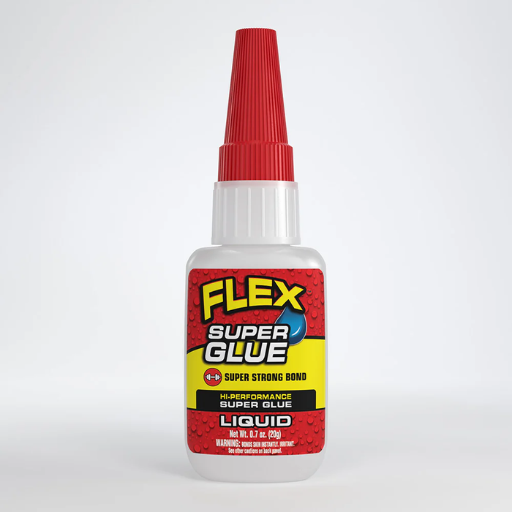
Also referred to as cyanoacrylate adhesive, Super Glue is one of the fastest-acting strong bonding glues available on the market. It can bond plastic, metal, wood, ceramic, and even glass. The water in the surrounding air would trigger a responsive action that turns Super Glue into a highly Durable glue bond. This glue would be perfect for precision work as it needs super small repairs. Super Glue is well known for its versatility, but its strongest suit is achieving tight fittings. Super Glue would not be very effective when it comes to gaps or porous surfaces.
How does Super Glue work?
Known widely as Super Glue, cyanoacrylate adhesive undergoes a chemical reaction called anionic polymerization. When exposed to trace amounts of humidity in the air, cyanoacrylate molecules undergo a rapid chemical reaction. This process rapidly links the molecules into long, strong polymer chains which harden into a bond. The rate at which this occurs is one of the main features of Super Glue, as it can bond under optimal conditions in seconds. Its efficiency, however, depends on surface cleanliness, material compatibility, and environmental humidity. For instance, very dry or porous surfaces make the bonding process difficult because they do not provide enough water needed to trigger the reaction.
What materials can you use Super Glue on?
Super Glue, or rather cyanoacrylate adhesive, is multifunctional and compatible with many items, though inconsistent on how effective it is with the surface features. On non-porous metals and plastics, ceramics, as well as glass, he performed exceptionally. Also, certain porous materials such as wood and leather work well, as long as the surface is conditioned properly for contact and moisture. Super glue does have limitations on areas such as polyethylene, polypropylene, or any greasy surfaces, oily surfaces because these areas have low adhesion due to low surface energy. There are specially formulated super glues designed to work with harder surfaces so that they may be used easily industrially and domestically.
Why choose Super Glue for your projects?
The exceptional capabilities of super glue, also known as cyanoacrylate adhesive, have made it popular worldwide. It can glue non porous surfaces with astonishing ease. The distinct rapidity of super glue’s curing process is remarkable since it can achieve a strong bond within seconds. Super glue is a perfect example of versatility. It can bond metals, ceramics, plastics, glass, and rubber with little to no preparation. Innovations made in the last few decades in the science of adhesives have made super glue more useful in everyday life along with industrial super glue by improving world’s adhesive’s impact resistance, durability, and thermal stability. In addition, the precision applicators by top manufacturers are now greatly helping in the reduction of adhesive waste and making using super glue easier. Baffling effectiveness coupled with unrivaled ability to withstand varying conditions while maintaining a strong bond is what makes super glue reliable in countless applications for years to come.
What is Loctite?
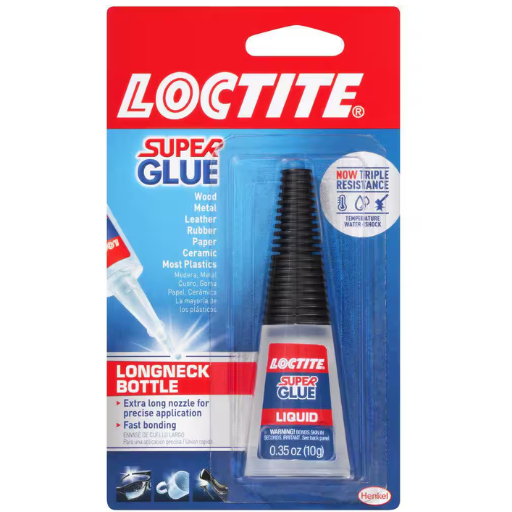
Loctite has become one of the most distinguished brands in sealants, adhesives, and surface treatments. They are trusted internationally for Automotive, Aerospace, and even Home centers. Loctite is developed from Henkel, where they are largely known for their consistency and heroic reliability. Their products include threadlockers, super glues, epoxies, structural adhesives, and many more, which were developed to accomplish strong and long lasting bonds even in harsh environments.
How does Loctite Super Glue differ from regular Super Glue?
Every user of multifarious glues distinguishes between them more because of their formulation and usefulness than anything else. This is the best super glue for rubber known because unlike traditional super glues, Loctite Super Glue is made to ensure maximum adhesive strength in less than a dime’s worth of clock time. The pliable bond provided by Loctite is greatly concerned with its incredible formulation and allows for exceptional super glue rubbt mask 204 resilience alongside a shock absorbing ability. All of this means that “Loctite super glue rubber cement” can withstand dynamic loads with vibrations. Interestingly, all Loctite super-glued rubbers possess properties that relate to temperature and humidity control as well as chemical xposition cancelling flex in the special demands category.
What applications are best suited for Loctite?
- Industrial Bonding:
Loctite is trusted in industries to bond metal to plastic or rubber because of its super tensile strength and ability to resist harsh environmental conditions. For instance, Loctite 401 and 402 are made to bond with multiple substrates but is also capable of enduring -65°F to 250°F (-54°C to 121°C) temperatures.
- Automotive Repairs:
For tasks like Internal and external trim attachment, plastic part section repairs, and attachment of engine seal Loctite specialized adhesives are fixes of choice for automotive professionals. Moreover, Loctite 480 is specifically designed to withstand impact which is common in automotive vibration.
- Electronics Assembly:
Careful and precise work in electronics need specialized systems that do not damage delicate parts. For example Loctite 3098 is purpose made for electronic circuits and micro assemblies offering thermal stability and low outgassing providing safety for electronic components.
- Household Repairs:
Losing figurines and furniture or broken ceramics can easily be fixed using Loctite, which is handy for household tasks. Wood, glass, and plastic are common household materials ranging from Loctite Super Glue Ultra Gel Control Plus.
- Medical Device Bonding:
Medical instruments such as tubes, syringes, catheters, and other medical devices are bonded with these specialized Loctite adhesives, which also require them to comply with strict regulations due to their capability to ensure safety and risk under high regulations.
Loctite remains the go-to for different industries due to the combination of ease of use without Loctite’s rigorous testing and high performance reliance for complex adhesive challenges supporting strict regulatory frameworks. Each application showcases the adaptability and versatility of Loctite for different industries.
Is Loctite effective on porous vs non-porous surfaces?
Loctite adhesives are effective on both porous and non-porous surfaces due to complex chemical technologies. For porous materials such as wood and concrete, Loctite products fill pores and irregularities on surfaces where bonds are formed, hence mechanical bonding is achieved. For non-porous materials such as metals, plastics, and glass, the adhesive must wet the surface uniformly to enable even adhesion and strong molecular bonding at the interface. Moreover, different formulations such as cyanoacrylates for fast rejoining and epoxies, Loctite adhesives for structural strength, serve different functions and perform reliably under different environmental and structural conditions. Studies shows that proper surface preparation such as cleaning and roughening optimally enhances adhesion of dissimilar materials by forming strong durable bonds.
Super Glue vs Loctite: Key Differences

Loctite and super glue are used differently and their scope of work does not overlap even though they share a common name. These two products are, however, distinct difference when it comes to composition, use, and most effective scenarios. It is of utmost importance when an adhesive is chosen for a specific task. The summary below covers the two adhesives comprehensively and in detail side by side comparison so users may understand the differences better.
What are the main differences between super glue and locite glue?
|
Category |
Super Glue |
Loctite |
|---|---|---|
|
Primary Composition |
Cyanoacrylate-based adhesive |
Varies, includes cyanoacrylate or epoxies |
|
Strength |
Ideal for small, light repairs |
Offers high-performance options |
|
Application Surface |
Best for non-porous materials |
Works on porous and non-porous surfaces |
|
Drying Time |
Dries within seconds |
Varies by product, typically fast |
|
Temperature Resistance |
Limited heat resistance |
Higher temperature tolerance available |
|
Flexibility |
Brittle once cured |
More flexible in specific formulations |
|
Water Resistance |
Low water resistance |
More options for waterproof bonds |
|
Longevity |
Prone to weakening over time |
Durable for prolonged use |
|
Gap-Filling Ability |
Minimal gap-filling ability |
Superior for filling gaps |
|
Packaging Variety |
Standard tubes or small bottles |
Wide range of specialized applicators |
|
Suitability for Professional Use |
Limited |
Widely used in industrial applications |
When to use Loctite instead of Super Glue?
Loctite adhesives demonstrate their strongest advantages in cases when high durability is required as well as environmental resistance. In structural bonding for industrial or heavy-duty uses, Loctite’s formulations are more effective for stress, vibration, and exposure to extreme temperatures. Thus, it is optimally used in automotive repairs, machinery, and other surface areas subjected to high loads. Moreover, Loctite is better than super glue in case of bond fats expansion and contraction, especially in metals and plastics undergoing heating and cooling cycles, because long-term bond maintenance is critical.
These products differ from the competition, such as super glue, because they possess the ability to gap fill uneven surfaces. The strength of the bond provides an advantage that Loctite super glue lacks. It has various formulations tailored for different applications which makes it more versatile than super glue. Lots of special construction adhesives also perform threadlocking and heavy-duty epoxies. This specialization comes with many advantages such as being better suited to do specific tasks.
When to Use Super Glue?

The super glue adhesive is best suited to non-ceramic and small surface repairs. Also, super glue works best on glass, ceramics, some plastics, and metals. Providing best results when precision and immediate bonding are needed, super glue has a short curing time and instant bond strength which makes it ideal for fixing some items. However, super glue does not work best on flexible materials, or items exposed to moisture, high temperatures, or heavy loads. Cutting surfaces need to be clean, dry and properly aligned to each other for optimal fit.
What types of projects benefit from Super Glue?
Super glue is most useful for precision projects which require instant bonds to be made. It does wonders with broken glassware, ceramic plates, and metal pieces, as household repairs demand item seamless bonds. Super glue is relied upon by hobbyists and DIY practitioners when stitching model kits, adjusting jewelry pieces, or designing complex works because it accurately bonds small parts. It can be handy in furnishings for fast temporary repairs to free moving parts or to glue rigid nonmoving parts of materials. On the other hand, works that need to be underwater, under extreme heat, water, or huge structural load need to use different glue tailored for those needs.
Can Super Glue be used on plastic?
Super glue goes by other names too, like cyanoacrylate adhesive. It can be used on a variety types of plastic, however not all types work equally well. It works exceptionally well on rigid plastics like polystyrene or ABS, which “modelers” use to create models. Many household items are also made of polystyrene or ABS plastics. However, some other plastics like polyethylene (PE) and polypropylene (PP) which are termed as low surface energy plastics are notoriously impossible for super glue to bond to. Specialized primers or adhesives for plastic bonding are recommended instead. Also, surface cleanliness, roughness, curing conditions, and other factors that modify mechanical contact between two items can greatly affect the adhesive’s performance on plastic. Following these guidelines allows one to significantly improve the outcome.
What are the limitations of Super Glue?
Super glue, like other widely-used bonding agents, has boundaries by which its usage can become ineffective. A common problem is that too porous or too pliable does not hold well with the rigid super glue as it becomes brittle once hardened. Inflexible bonds can break or become cracked if stress or motion in introduced. Polyethylene and polypropylene plastics cannot be joined either, because of their low surface energy. These two low energy surface materials are problematic. In addition to this, super glue cannot withstand moist environments during storage or application. This low resistance to heated environments results in super glue’s breakdown or loss of potency if exposed to over 180°F (82°C). Other factors include being exposed to solvents and oils which deteriorate its adhesive quality. Finally, super glue should not be used for stuctural or load-bearing applications. This is because it cannot endure significant mechanical forces or vibrations for stretchable durations. Weak structural bonds serve as additional proof to highlight the need for super glue if exposed to harsh temperatures.
When to Use Loctite?
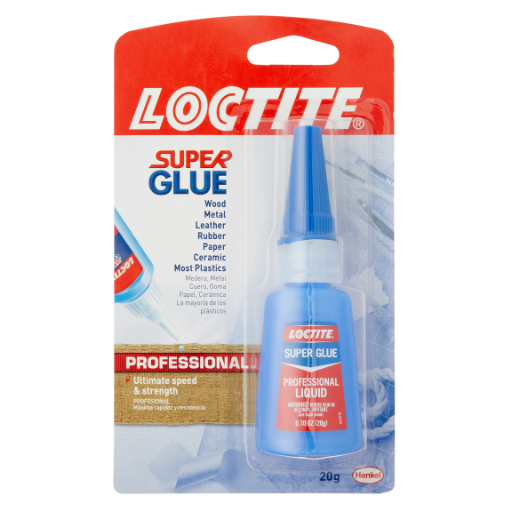
Loctite is perfect for cases when strong and trusted adhesion to metals, plastics, and other materials is needed. It works well for the quick repair of small parts, fixing screws to counter their vibration-induced loosening, sealing threaded joints for leakage protection, and augmenting the mechanical strength of some joints in order to prevent wear. Use Loctite whenever it is necessary to make a bond that will outlast the contract or adversarial forces in the environment, undergo shifting forces, or be subjected to moderate temperatures and chemicals. Always refer to the product specifications to ensure compatibility with the materials and conditions of your project.
What situations call for Loctite Super Glue?
Using Loctite Super Glue is ideal for problems where materials need to be bonded quickly and with high strength accuracy, for example, superglue is dosed with precision. Loctite Super Glue is best for emergency repairs around the house, while the automobiles, and even industrial machines. It works well on metal, plastic, rubber, ceramic, and wood, so it is used in many different fields. Because of its impact and vibration resistance, as well as many solvents, it can endure high stress durability. Furthermore, Loctite Super Glue is able to applicate small amounts which helps in fixes delicate items such as jewelry and small electronics. While using any glue, make sure the surfaces are clean and dry. Always refer to the technical data sheet of the product for maximum safety and performance.
How does Loctite perform on metal car parts?
Loctite adhesives are well known to strongly bond metal car parts and perform their best under rigorous automotive conditions. Exposure to high temperatures, vigorous shaking, and contact with oils or fluids common in automotive settings will not hinder their effectiveness if used properly. One example is Loctite Threadlockers that keep fastenings from being undone because of constant shaking. Their anaerobic curing mechanism ensures they can freely bond within threaded metal parts and form a seal that is tight enough to resist any form of leakage. Also, Loctite offers epoxies and structural adhesives that provide shear strength needed for larger metal surface repairs or joins. Surface preparation steps like cleaning or degreasing play a vital role in optimally adhering and increasing durability of the dielectric joint. Follow product datasheets to meet automotive standards regarding load limits, operational temperatures, and chemical exposure.
Which Loctite products are best for thread locking?
For protective thread locking solutions, Loctite has innovative offers depending on strength and environmental conditions. Loctite Blue 242 is ideal for light to medium strength fastening while still being easy to unscrew with standard hands tools. For very high strength applications, Loctite Red 271 is suggested. Heavyduty equipment and machinery with high vibration requires super strong lock, so that is best because of its vibration resistance.
Moreover, for more delicate threaded parts, Loctite Purple 222 offers a lower strength option which provides secure fastening while preventing over-tightening and damage to threads. In more demanding industrial settings where oil or heat, amongst other contaminants, may be present, stronger Loctite 243, a medium-strength oil-tolerant formula, offers greater dependability. These products are used in numerous sectors such as automotive, aerospace, and manufacturing. As always, verify the TDS (technical data sheet) of the document to determine the materials and working conditions suitability.
Reference Sources
-
Experimental investigation and comparison of fatigue behavior of polymer matrix composites: This study used Loctite Super Glue 3 Gel adhesive for bonding composite materials in fatigue tests.
-
Summary of Glue Tests 1993: This research involved Loctite 376 optical cure adhesive, focusing on bond failures between ceramic, metal, and adhesive layers.
-
Adhesives and Glues: Discusses the common ingredients in acrylate glues, including Loctite, and their application in various tests.
Frequently Asked Questions (FAQs)
Q: What is the main difference between super glue and Loctite?
A: The main difference is that while super glue (like ethyl cyanoacrylate) is a general-purpose adhesive, Loctite offers a variety of specialized adhesives, including those designed for specific materials and conditions, such as the Loctite threadlocker.
Q: Can I use super glue instead of Loctite for threaded applications?
A: It’s generally not recommended to use super glue instead of Loctite for threaded applications. Loctite threadlockers are designed to secure bolts and screws, preventing them from coming loose under vibration, while super glue does not offer the same level of strength or resistance.
Q: Is Gorilla Glue better than super glue?
A: Gorilla Glue and super glue serve different purposes. Gorilla Glue is a polyurethane adhesive that expands and is great for porous materials, while super glue (like super glue gel) is better for quick bonding of non-porous surfaces. The choice depends on your specific project needs.
Q: How does Loctite super glue professional compare to regular super glue?
A: Loctite super glue professional typically offers superior performance with features such as a clog-free nozzle, strong adhesion, and the ability to bond a wider variety of porous and non-porous materials compared to regular super glue.
Q: What is the best use for blue Loctite?
A: Blue Loctite is a medium-strength threadlocker that is ideal for securing screws and bolts that you may want to remove later. It provides strong adhesion without permanently locking the components together.
Q: Can I apply super glue to hard plastics?
A: Yes, super glue can be applied to hard plastics, but ensure that it is a quality super glue formulated for plastic bonding, as not all super glues work effectively on all types of plastic.
Q: Does super glue work faster than Loctite products?
A: Super glue typically works faster due to its quick bonding properties. However, Loctite products may take longer to set but often provide a stronger bond over time, especially in applications that require durability.
Q: Is there a specific super glue gel for precise application?
A: Yes, super glue gel formulas often come with a pinpoint nozzle for precise application, allowing for controlled dispensing and reducing the risk of excess glue on your project.
Q: What should I consider when choosing between super glue and threadlockers like Loctite?
A: Consider the materials you are bonding, the required strength of the bond, environmental conditions, and whether you may need to disassemble the parts later. If it’s a threaded application, a threadlocker like Loctite is usually the better choice.







